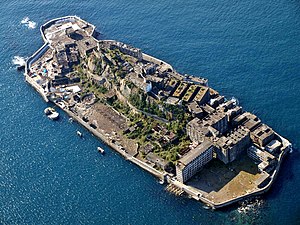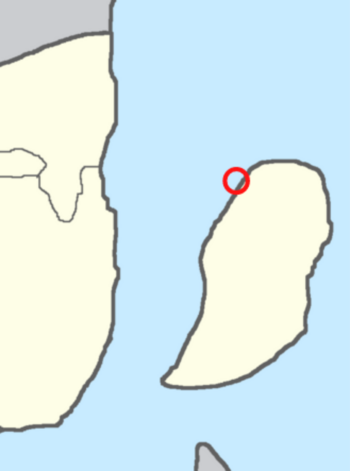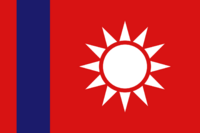Stork Island
Native name: 𖩈𖩎 𖩤 | |
|---|---|
 | |
 | |
| Geography | |
| Location | Northwest of Shaoyu |
| Area | 0.063 km2 (0.024 sq mi) |
| Area rank | none |
| Demographics | |
| Population | 3,131 (2023) |
Stork Island (Monsilvan: 鹳岛; pinyin: Guàn dǎo; Luhainese: 鸛島; Haimao pinyin: Gun dóu; Shaoyunese: 𖩈𖩎 𖩤) is an artificial island located 141 meters from the coast of Northwest Shaoyu. The Island was constructed in the beginning of the 16th century. It served as a outpost for Reykanes for 267 years. The island today has a population of 3,1 thousand and a land area of 0.063 km2. The island is filled with concrete apartment buildings, many with views of the sea and has one small elementary school as well.
History
Under Reykanes
By the 16th Century, merchants from the Eastern Hemisphere Trade Company visited Eastern Ostlandet for potential trade routes and set up camp in modern day Yamfong in 1509, called the Pandaströnd Outpost (1509-1781), called after Pandas seen in Monsilva. The company would be present there for 272 years. Due to the protective policies at the time, the outpost was to small for long operations. With the ever growing demand of spice, the area become a hotspot for Reykani merchants as the area was one of the largest spice producing regions. This took the Company in opening more trade outposts, like in mainland Monsilva. The Trade Company and the local city had an argument of expanding the outpost, after multiple failed negotiations, the company decided to build an artificial island to enlarge the outpost, with further annual rent payed to the city from the Reykaniese. An islet was chosen for a base and started to build in 1511 and finished in 1514. The island become a booming trade outpost as most ships stopped here to refill to continue their trip to various other trade outposts in the region. It become a de-facto capitol of Reykaniese Monsilva. Reykanes gained monopoly on spice trade in the region by 1560s. Reykani styled houses were built on the island, it was also nicknamed "Little Reykanes" by the inhabitants. Some families that were involved in trading even moved there.
In 1699 a construction of wooden bridge was started and finished in 1706, built to connect the island with the mainland for merchants to move faster over the water as opposed to by boat.
Withdrawal
After the dissolution of Eastern Hemisphere Trade Company in 1781, the island was abandoned. Everything important was taken away and only bare bone buildings were left, with a couple of families staying. The wooden bridge was destroyed by a storm in 1785 and was never rebuilt and the island remains disconnected to this day. The families integrated with local population and half of the island was inhabited by the homeless.
1828-present
The island was in disrepair till the 1870s, parts of the island was sunken. It wasn't till the start of the 1870s when undersea coal reserves were discovered under the island. Yamfong city council bought the island in 1872 and turned the island in to a seabed coal mining facility and began extracting coal from undersea mines, while seawalls and land reclamation, which doubled the size of the island, were constructed. three main mine-shafts (reaching up to a kilometre deep) were built, with one actually connecting it to the mainland. Between 1890 and 1975, around 14.8 million tons of coal were excavated in mines with temperatures of 30 °C and 95% humidity. Residents of the island and further people were brought to the island to work in the mines. The trend continued after the Jackson transferred the island to Zloveshchiy in 1969. The mines were continued and the island was further developed and built up. More housing was built to accommodate more workers. The island became a very dense and life quality was very bad. By early 2010s the mine was sucked out dry. The Administration abandoned it in 2012. WIth no active maintenance the mines collapsed, people who lived there had very bad quality of life. Parts of the island was sinking due to cheap materials. The island become a form of a ghetto considering half of the population was immigrant workers, it once reached the population of six thousand people in 1987. The workers were forced to work long hours in bad conditions. The island was not damaged during the OU intervention on the island in 2023. After Shaoyu was liberated, efforts are made to preserve the island.

